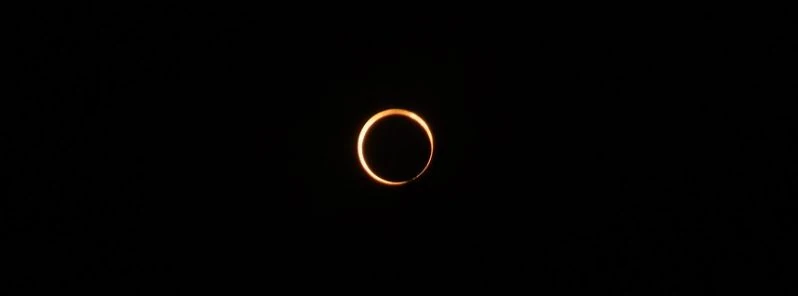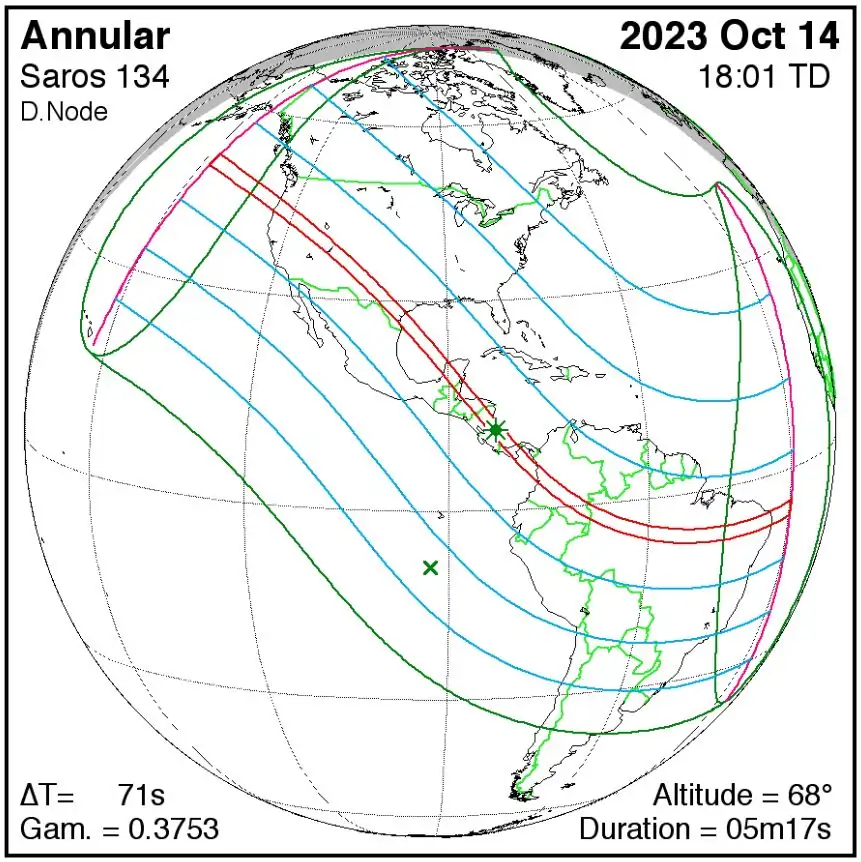Ring of Fire – Annular solar eclipse crosses the Americas on October 14, 2023

An annular solar eclipse will cross North, Central, and South America on October 14, 2023. Offering a “ring of fire” effect, this celestial event will be a sight for millions across the Western Hemisphere.
The much-anticipated “ring of fire” phenomenon is set to grace our skies when the Moon, at its most distant position from Earth, aligns perfectly between the Sun and our planet on October 14. Due to its farther location, the Moon will appear slightly smaller than the Sun, resulting in an incomplete cover and creating the famed “ring” effect.
Optimal viewing spots, weather permitting, include the US states of Oregon, Nevada, Utah, New Mexico, and Texas. Other regions anticipating the spectacle span parts of California, Idaho, Colorado, and Arizona. Continuing its trajectory, the annular eclipse is forecasted to be visible in Central America, specifically over countries like Mexico, Belize, Honduras, and Panama. Concluding its journey in South America, the eclipse is set to pass through Colombia and culminate just off the coast of Natal, Brazil, as it meets the Atlantic Ocean.
The instant of greatest eclipse is predicted at 17:59:29 UTC on October 14, which is 4.6 days after the Moon reaches its apogee. During this celestial alignment, the Sun will reside within the Virgo constellation.
Delving into the chronicles of such phenomena, this eclipse, categorized under Saros 134, stands as the 44th in a series of 71. It’s worth noting that all eclipses in this series occur at the Moon’s descending node. With every subsequent eclipse in the series, the Moon’s motion trends northward relative to the node, causing an increment in gamma.
The annular solar eclipse of October 14, 2023, is followed two weeks later by a partial lunar eclipse on October 28, 2023. These eclipses all take place during a single eclipse season.

Viewing the Sun without proper equipment can cause immediate, permanent eye damage. Directly observing it, even through binoculars or a telescope’s finderscope, can lead to instant blindness. If unsure about your equipment’s safety, avoid risking it. Attend a public observing event instead, as many astronomical societies host safe viewings and welcome newcomers.
Featured image credit: Toshiyuki Imai

Commenting rules and guidelines
We value the thoughts and opinions of our readers and welcome healthy discussions on our website. In order to maintain a respectful and positive community, we ask that all commenters follow these rules.